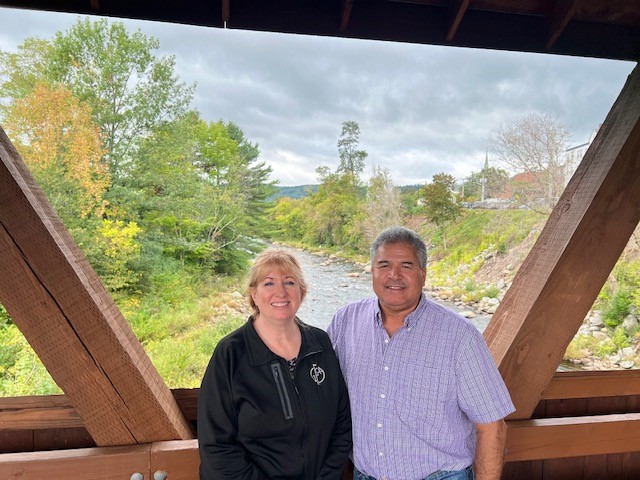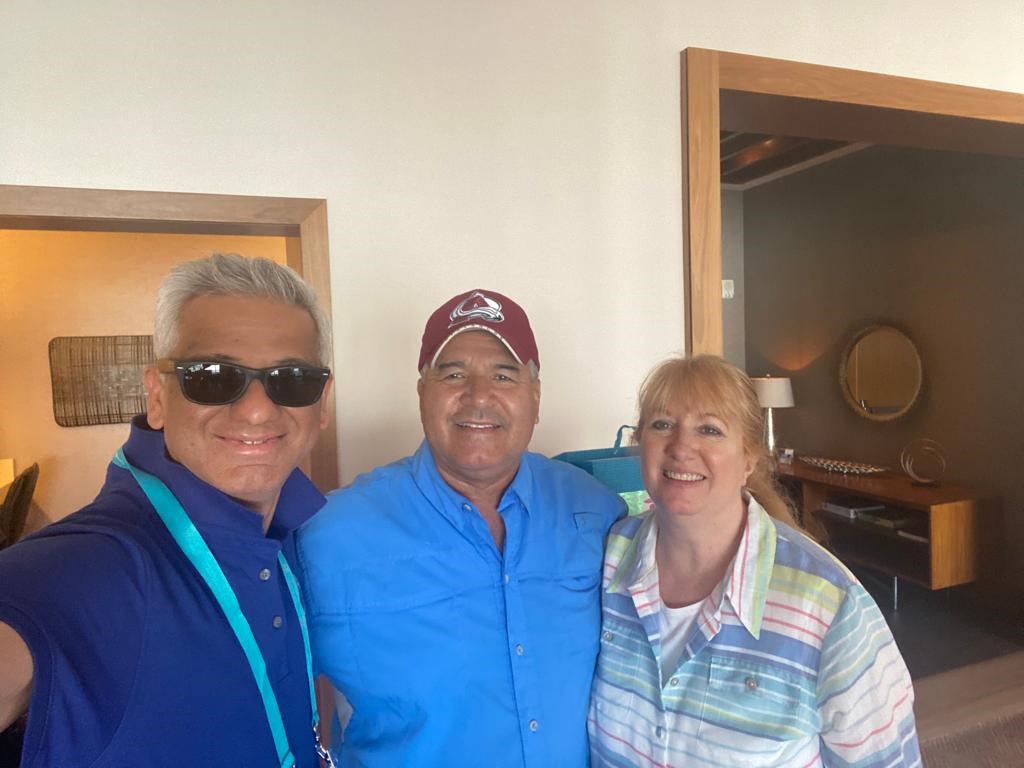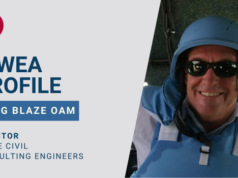Terri Velasquez is a leader in local government in the US and Canada as President of the Government Finance Officers Association (GFOA). She’s on a mission to take the industry forward through spreading the implementation of Strategic Asset Management and dealing with issues of sustainability, professional development and ethics.
When Terri Velasquez visited Adelaide a few months ago (April 2022), she visited a local park and was impressed by the solar powered grills for bbq’s and a solar charging station for mobile phones.
The initiative underlined to her how the theme of sustainability was gaining momentum, and how local government organisations charged with providing community infrastructure could innovate and respond to issues around climate change.
“It was wonderful to see this because I’d never seen anything like that in the US, and it was a real message to me on how our asset management needs to respond to the environmental issues we are faced with,’ said Velasquez, who is also the Finance Director for the City of Aurora in the state of Colorado.

Sustainability is a key issue for Velasquez as she leads both the GFOA and her city of Aurora into a future in which the approach to asset management is changing and maturing into a more holistic and integrated practice.
In Colorado, for example, the management of water resources is increasingly critical, with seven states and 40 million people relying on the Colorado River for water in addition to power generation.
‘We have to look at our resources, and how we can build them to be sustainable,’ said Velasquez, who also has the distinction of being the first female Finance Director at Aurora, which includes the second and third largest cities in Colorado.
“What is working today might not work into the future, so we definitely have to factor that in and change our approach with the climate and environment very much a priority.”
Velasquez’s role at the GFOA is to represent the membership of 23,000 as President, but it also has an international dimension as the GFOA works with IPWEA. Other international delegations include Sweden, South Africa, Israel, and the Republic of Georgia .
As GFOA President she also meets regularly with state and provencial based stakeholders and other organisations in the US and Canada such as the National Institute of Governmental Purchasing and the National Forum for Black Public Administrators and organisations such as the Municipal Finance Officers Association in Ontario, Canada.
GFOA was also actively collaborating with the Local Government Hispanic Network, creating a partnership to better serve GFOA members in both organisations.
These connections, she says, added to her understanding on how the approach to asset management is changing and how the GFOA can lead the way as a catalyst in the US and Canada.
There are challenges, such as a talent shortage and the ongoing issue of financial resources, but Velasquez is upbeat about the positive changes that can come from implementing Strategic Asset Management.
“We have a responsibility and a duty to look at asset management from that perspective, and think about lifecycle costing and how we allocate resources to make them stretch, and its critical to think strategically in the planning process,” she said.
“So how do we do that? How do we collaborate between finance and public works? These are the key processes we need to be involved in and I don’t think we will find solutions without bringing all stakeholders into the process.”
While historically the public works area had been focused on newer projects and “ribbon cutting,” the strategic asset management approach was a “bit of a revolution” in how it was giving managers a methodology to better understand the lifecycle of assets and what was required to manage them better over the longer term.
In the City of Aurora, for example, the public works department pointed out to the council that the roadway infrastructure was continuing to degrade and gained support for a program more focused on maintenance as a way of preventing the need for replacement of the assets in the longer term.
“We were very pleased that this was an undertaking the council was prepared to make and prioritise at a time when you have many competing priorities,” said Velasquez.
“That is just one example of how things are changing and hopefully having asset management strategies in place will lead to bigger steps forward, because to me that is the blueprint and part of what I am working on with the GFOA.”
Another positive development in Aurora was also in response to environmental and climate impacts.
“Recently Aurora, Colorado Water Department presented a change in development requirements to City Council which use less water for landscape and changes in the landscape requirements,” said Velasquez.
She identifies “people” as another critical issue in asset management. There is a skills shortage which can partly be addressed by remote working, but longer term the answer lies in “focusing on asset management as a discipline that is unique and requires skill sets which bring finance and engineering together.”

Education is at the centre of this and Velasquez has promoted IPWEA’s programs to her staff as way of upskilling and increasing the awareness of Strategic Asset Management.
Asked to describe three priorities in her role as President of the GFOA, Velasquez first nominates the promotion and expansion of Strategic Asset Management as a discipline.
A US and Canadian framework was underway which would be promoted on the websites of relevant organisations to drive education and outreach with members.
“I think we have a good pathway forward on this and I hope it is something that the GFOA membership will grasp and embrace,” she said.
The second priority was around “diversity, equity and inclusion” and this was important not only ethically, but to help address capacity which is the third priority.
“In addressing capacity the question is how do we assist people in feeling welcome and included and engaged in their organisations?” Velasquez said.
“We’ve probably all heard the saying that people don’t leave their job, they leave a bad environment.
“And I think that if we can make the workplace a good environment where they feel valued and they are adding value, that makes a big difference.”














